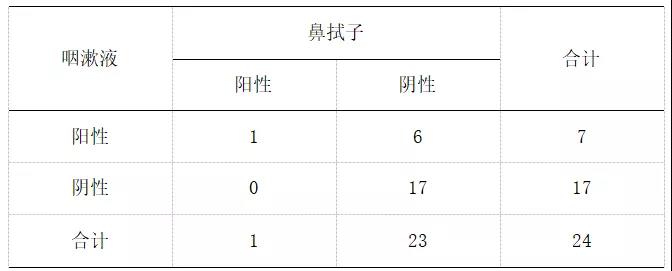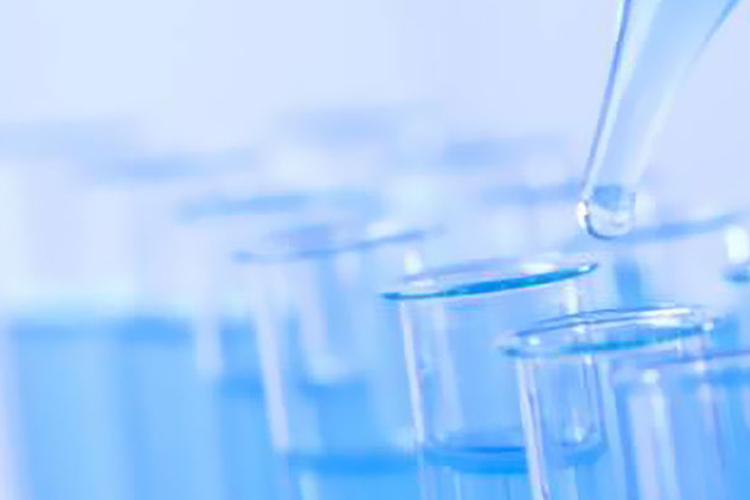Throat washings used for nucleic acid detection of Covid-19 show a higher accuracy rate than nasal swabs
2020-04-091194On April 9, 2020, Clinical Infectious Disease (IF=9.05) published a paper titled "Effect of throat washings on detection of 2019 novel coronavirus", which is based on a study conducted by the team of Li Shirui/Yefeng from the First Affiliated Hospital of Guangzhou Medical University, National Clinical Research Center for Respiratory Diseases, Guangzhou Respiratory Health Research Institute and SKLRD. This study was the first to use throat washings on nucleic acid detection of Covid-19 and compare with the detection rate of nasal swabs. It was found that the positive detection rate of throat washings is higher than that of nasal swab specimens.

Since December 2019, the Covid-19 has swept the world. It posed a huge threat to the lives and health of people around the world due to the high spreading speed and strong infectivity. As of April 21, 2020, the cumulative number of confirmed cases worldwide had exceeded 2.4 million. Therefore, timely and accurate diagnosis of the disease is essential to control its outbreak and protect people's lives.
Nucleic acid detection is currently the main detection method for the Covid-19. However, studies have shown that different sampling specimens have different sensitivity to nucleic acid detection. At present, the diagnosis and condition test of patients infected by the Covid-19 as well as large-scale community screening require repeated virus sampling and detection. The optimal sampling specimen should meet the following requirements: 1. Non-invasive, convenient and easy-to-use; 2. High positive detection rate of viral nucleic acid detection; 3. No need of contact with patients during sampling; 4. Avoid aerosol biological safety issues as much as possible.
Nasopharyngeal swabs are the most commonly used samples for nucleic acid detection at present. Moreover, studies showed that the positive detection rate of Covid-19 of nasal swabs is higher than that of oropharynx swabs. However, sampling with nasal swabs will make patients feel uncomfortable. Secondly, it is inevitable to contact with the patient, which increases the risk of infection among the sampling personnel. And for the huge number of infected people, sampling with nasal swabs requires huge sampling time and human resources. Therefore, it is urgent to develop a new, highly safe, convenient, and feasible sampling method for nucleic acid detection of Covid-19.
To address this problem, Li Shiyue and Ye Feng’s team proposed the throat washing sampling method which can obtain more epithelial cells by oscillating the posterior pharyngeal wall with sterile saline to improve the positive detection rate. To this end, we collected throat washings and nasal swabs from patients with Covid-19 for nucleic acid detection and compared the positive detection rates of the two.
A total of 11 patients diagnosed with Covid-19 were included in the study. Among them, 6 patients showed positive by sputum Covid-19 nucleic acid testdetection were still quarantined in hospital, and the remaining 5 patients had reached the discharge standard and entered the 14-day observation period. There were 9 males and 2 females, aged from 26 to 83 years old. Twenty-four samples of throat washings and nasal swabs were retained. The average interval between detection and outbreak is (53±2) days. Six cases of nasal swabs were detected as negative and the corresponding throat washing results were positive. 17 cases of throat washing results were detected as negative and the corresponding nasal swab results were negative. The positive detection rate of throat washings was higher than that of nasal swabs, P=0.031. See Table 1.

Table 1 Comparison of 24 cases of nucleic acid detection results of Covid-19 by different sampling methods
At present, the epidemic situation in the world is quite severe. As a non-invasive, easy-to-use and effective sampling method, throat washing can be used for nucleic acid detection of Covid-19. The patients are required to collect samples to avoid contact with the infected patients and reduce the risks of infection for medical staff. In addition, it can significantly reduce the waiting time. It is especially important for detection on the large number of infected patients with limited medical staff and busy clinical demands.
















